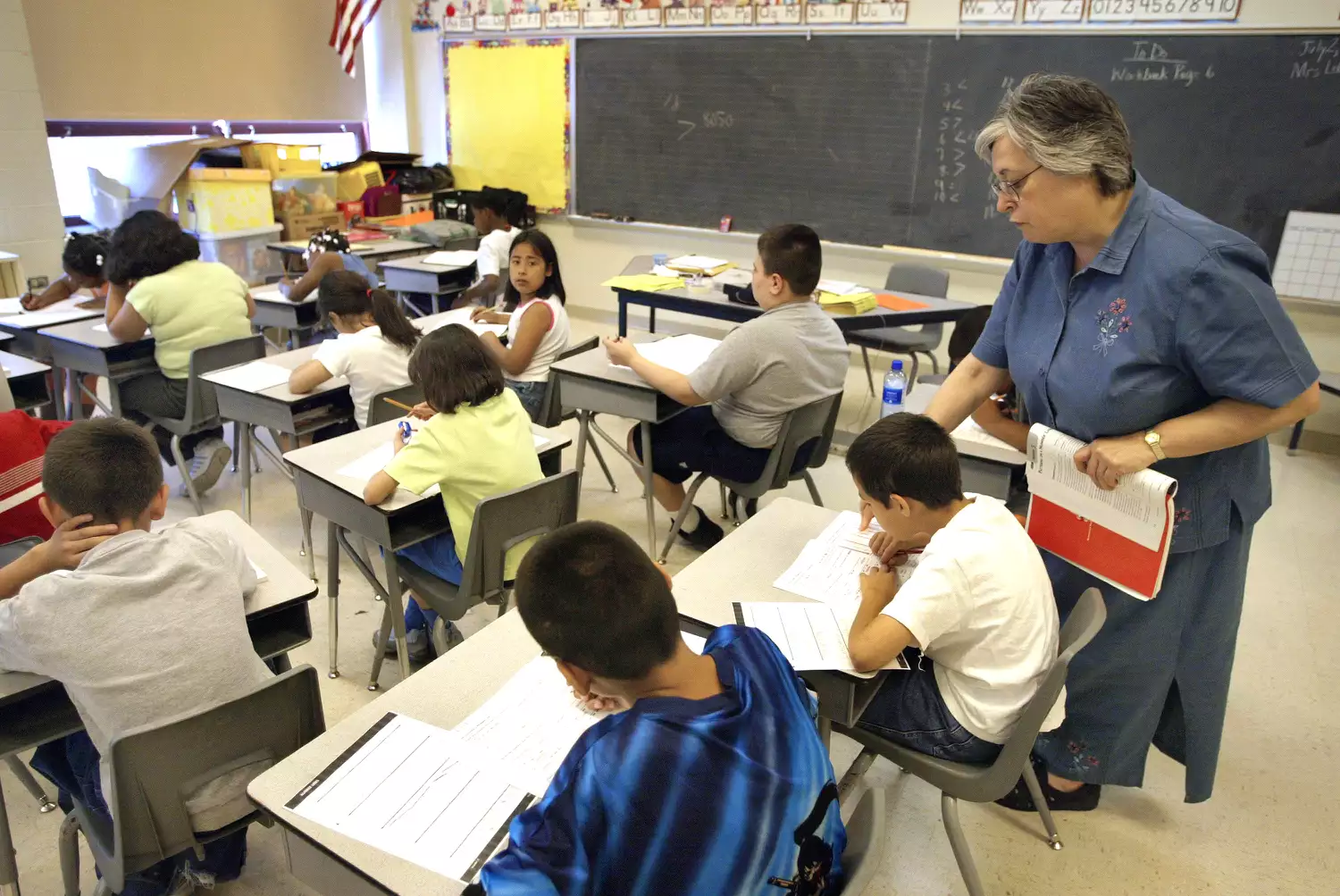
There are a variety of ways to evaluate a student’s progress and understanding. Two of the main methods are formal and casual assessments. Formal evaluations include tests, tests, and tasks. Trainees can study and get ready for these assessments in advance, and they supply a methodical tool for instructors to determine a trainee’s knowledge and evaluate discovering development.
Casual assessments are more casual, observation-based tools. With little advance preparation and no requirement to grade the results, these assessments allow teachers to get a feel for student development and determine areas in which they may need more direction. Informal evaluations can assist teachers determine students’ strengths and weaknesses and guide preparation for upcoming lessons.
In the classroom, informal assessments are very important because they can assist identify possible issue locations and enable course correction prior to trainees are required to demonstrate understanding at a formal assessment.
Numerous homeschooling families choose to rely almost totally on informal assessments because they are typically a more precise indication of understanding, especially for trainees who do not check well.
Informal assessments can likewise supply essential trainee feedback without the tension of tests and tests.
Following are simply a few examples of innovative casual assessments for your class or homeschool.
Observation
Observation is the heart of any informal evaluation, however it is also an essential stand-alone approach. Just view your student throughout the day.
Keep samples of trainee operate in chronological order so that you can determine progress and locations of weak point. Sometimes you don’t recognize just how much a trainee has actually progressed up until you compare their current work to previous samples.
Author Joyce Herzog has a basic however reliable method of observing development. Ask your student to do basic jobs such as writing an example of each math operation he understands, composing the most complex word he knows he can spell properly, or writing a sentence (or brief paragraph). Do the exact same process once a quarter or as soon as a term to determine development.
Oral Presentations
We often think of oral discussions as a type of formal assessment, but they can be a great casual evaluation tool. Set a timer for a couple of minutes and ask your student to inform you what he’s learned about a specific subject.
For instance, if you are learning more about parts of speech, you could ask your students to call as many prepositions as they can in 30 seconds while you write them on the white boards.
A wider approach is to present students with a sentence starter and let them take turns completing it. Examples consist of:
” My favorite aspect of this subject was …”.
” The most fascinating or unexpected thing I discovered this was …”.
” This historic figure was …”.
Journaling.
Offer your students one to 3 minutes at the end of each day to journal about what they found out. Differ the everyday journaling experience by asking students to:.
list 5-10 realities they’ve learnt more about a topic.
blog about the most exciting thing they found out that day.
list a couple of things they ‘d like to know more about.
note something that they’re having trouble understanding.
list manner ins which you could help them comprehend a subject much better.
Paper Toss.
Let your students write concerns for each other on a paper. Instruct trainees to crumple their paper, and let them have a legendary paper wad toss. Have all the students choose up one of the paper balls, read the question aloud, and answer it.
This activity wouldn’t work well in the majority of homeschool settings, however it’s an exceptional way for trainees in a classroom or homeschool co-op to get the wiggles out and examine their knowledge on a topic they’ve been studying.
Four Corners.
Four Corners is another fantastic activity for getting kids up and moving while also evaluating their knowledge. Label each corner of the room with a various choice such as strongly agree, agree, disagree, strongly disagree, or A, B, C, and D. Read a question or declaration and have trainees go to the corner of the space that represents their answer.
After trainees reach their corner, enable them a minute or 2 to discuss their option in their group. Then, choose an agent from each group to explain or protect that group’s answer.
Matching/Concentration.
Let your students play matching (likewise called concentration) in groups or pairs. Write concerns on one set of cards and answers on the other. Shuffle the cards and lay them, one by one, face down on a table. Students take turns turning over 2 cards attempting to match a question card with the correct response card. If a trainee makes a match, he gets another turn. If he does not, it’s the next players turn. The trainee with the most matches wins.
Concentration is a very flexible video game. You can utilize math facts and their responses, vocabulary words and their definitions, or historic figures or events with their dates or details.
Exit Slips.
At the end of each day or week, have your students finish an exit slip before leaving the classroom. Index cards work well for this activity. You can have the questions printed on the cards, written on the whiteboard, or you can read them aloud.
Ask your trainees to fill out the card with responses to declarations such as:.
Three things I learned.
Two questions I have.
One thing I didn’t comprehend.
What I found most fascinating.
This is an excellent activity for assessing what trainees have actually maintained about the topic they are studying and to figure out locations which might need more explanation.
Demonstration.
Supply the tools and let trainees reveal you what they understand, explaining the process as they go. If they’re learning more about measurements, offer rulers or a tape measure and items to measure. If they’re studying plants, provide a range of plants and let trainees mention the various parts of the plant and describe what each does.
If students are discovering biomes, supply the settings for each (drawings, images, or dioramas, for instance) and design plants, animals, or bugs that a person might find in the biomes represented. Let trainees put the figures in their appropriate settings and discuss why they belong there or what they understand about each.
Drawings.
Drawing is an outstanding method for creative, artistic, or kinesthetic students to express what they’ve discovered. They can draw the steps of a process or produce a cartoon to illustrate a historic event. They can draw and label plants, cells, or the parts of a knight’s armor.
Crossword puzzles.
Crossword puzzles make a fun, worry-free informal evaluation tool. Create puzzles with a crossword puzzle maker, using meanings or descriptions as the ideas. Precise answers result in a correctly-completed puzzle. You can use crossword puzzles to assess understanding of a variety of history, science, or literature subjects such as states, presidents, animals, or perhaps sports.
Narrative.
Narration is an approach of trainee evaluation extensively utilized in homeschooling circles and motivated by Charlotte Mason, a British teacher, at the turn of the 20th century. The practice includes having a trainee inform you, in his own words, what he has heard after a read-aloud or discovered after studying a topic.
Describing something in one’s own words requires understanding of the subject. Using narrative is an useful tool for finding what a student has found out and determining areas that you may require to cover more completely.
Drama.
Invite students to act out scenes or develop puppet shows from subjects they’ve been studying. This is especially effective for historical occasions or biographical studies.
Drama can be an extremely important and easy-to-implement tool for homeschooling households. It’s common for children to integrate what they’re learning into their pretend play. Listen and observe as your children play to examine what they’re learning and what you may require to clarify.
Trainee Self-evaluation.
Use self-evaluation to help trainees reflect on and assess their own progress. There are lots of options for an easy self-assessment. One is to ask trainees to raise their hands to suggest which statement applies to them: “I totally comprehend the topic,” “I mostly understand the subject,” “I’m a little baffled,” or “I need help.”.
Another alternative is to ask trainees to offer a thumbs up, a sideways thumb, or a thumbs down to suggest fully understand, mostly comprehend, or require aid. Or use a five-finger scale and have trainees hold up the number of fingers that corresponds to their level of understanding.
You might likewise want to produce a self-evaluation kind for students to complete. The form can note declarations about the project and boxes for trainees to examine if they highly concur, concur, disagree, or highly disagree that the declaration uses to their assignment. This kind of self-evaluation would likewise work for students to rank their habits or participation in class.




